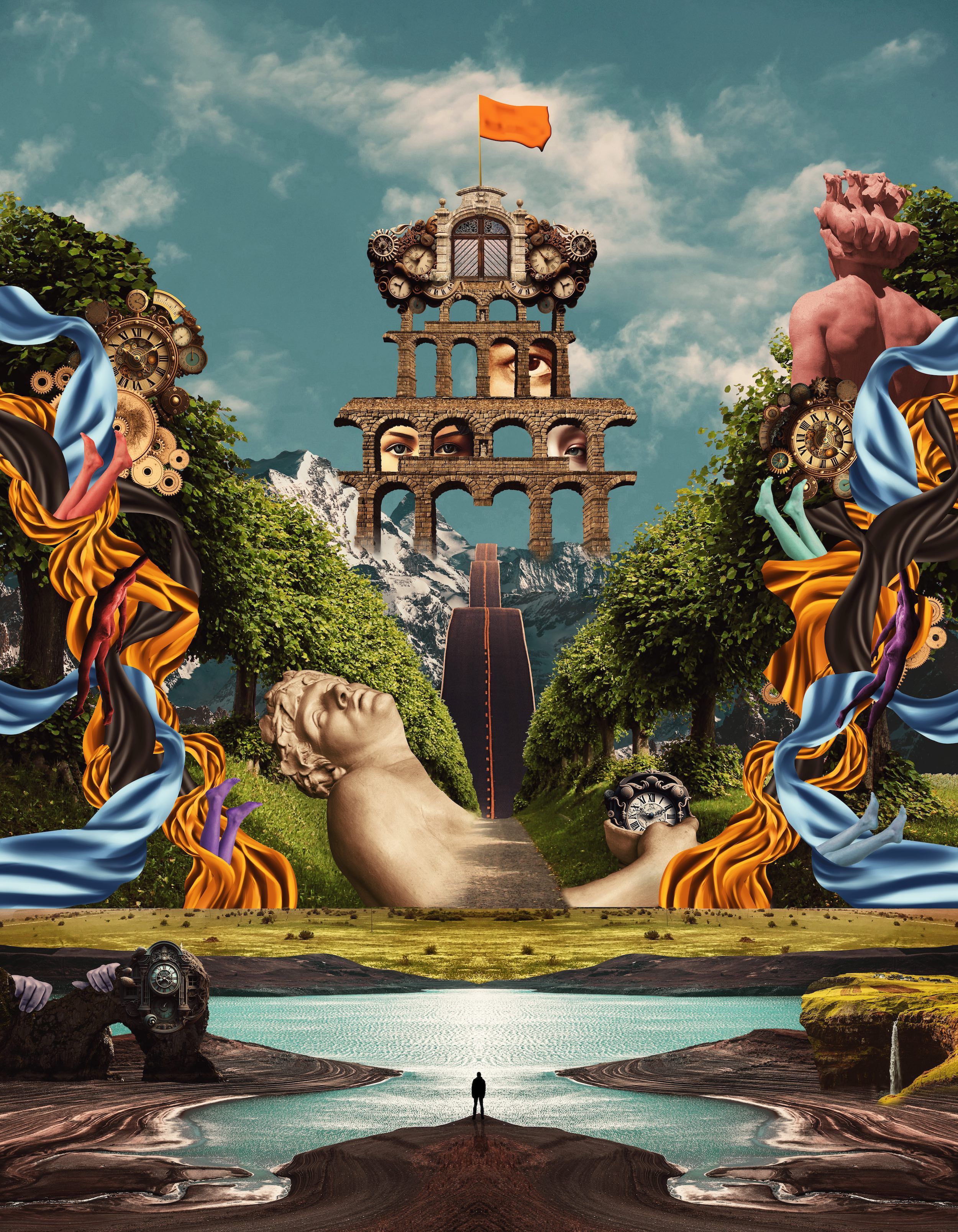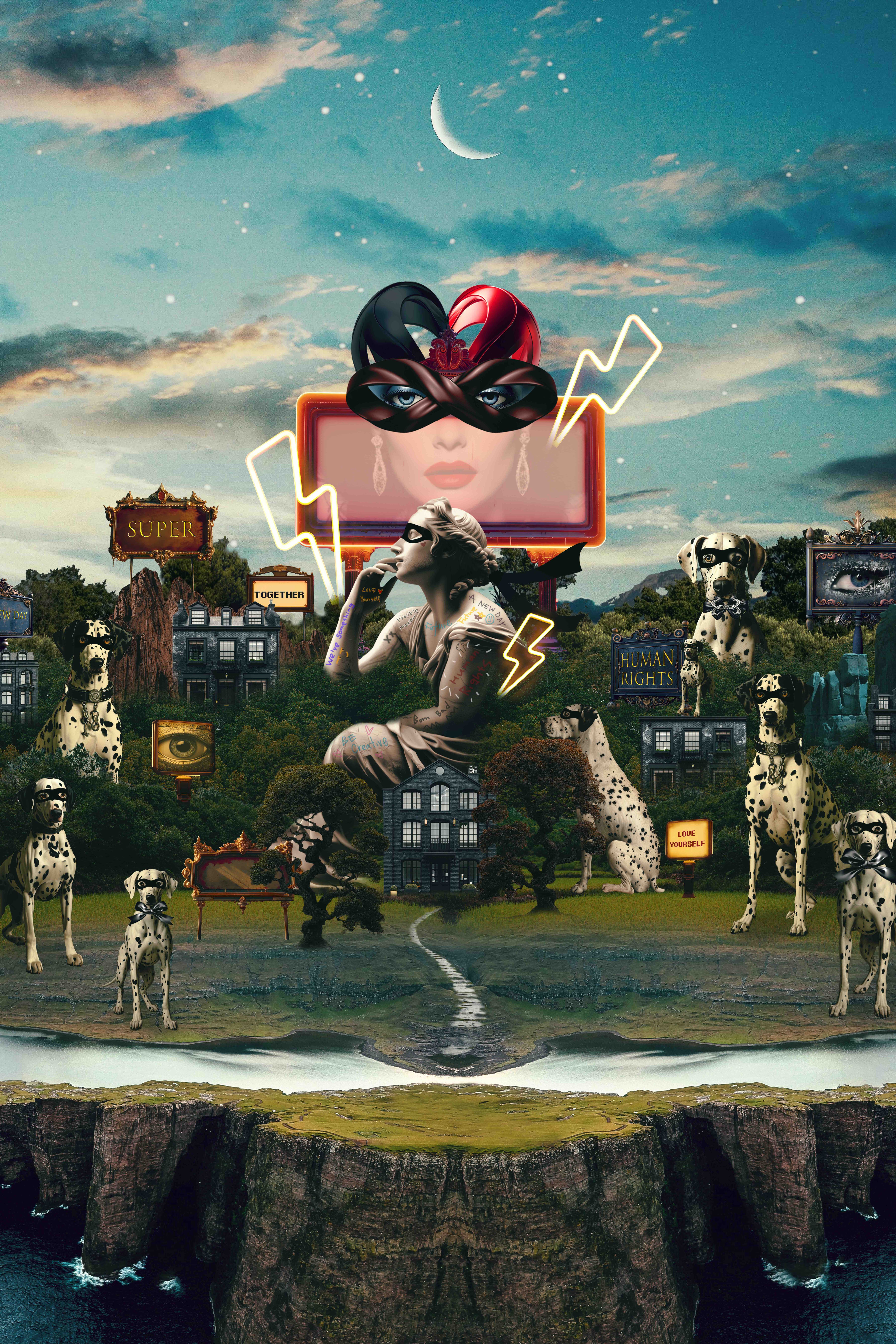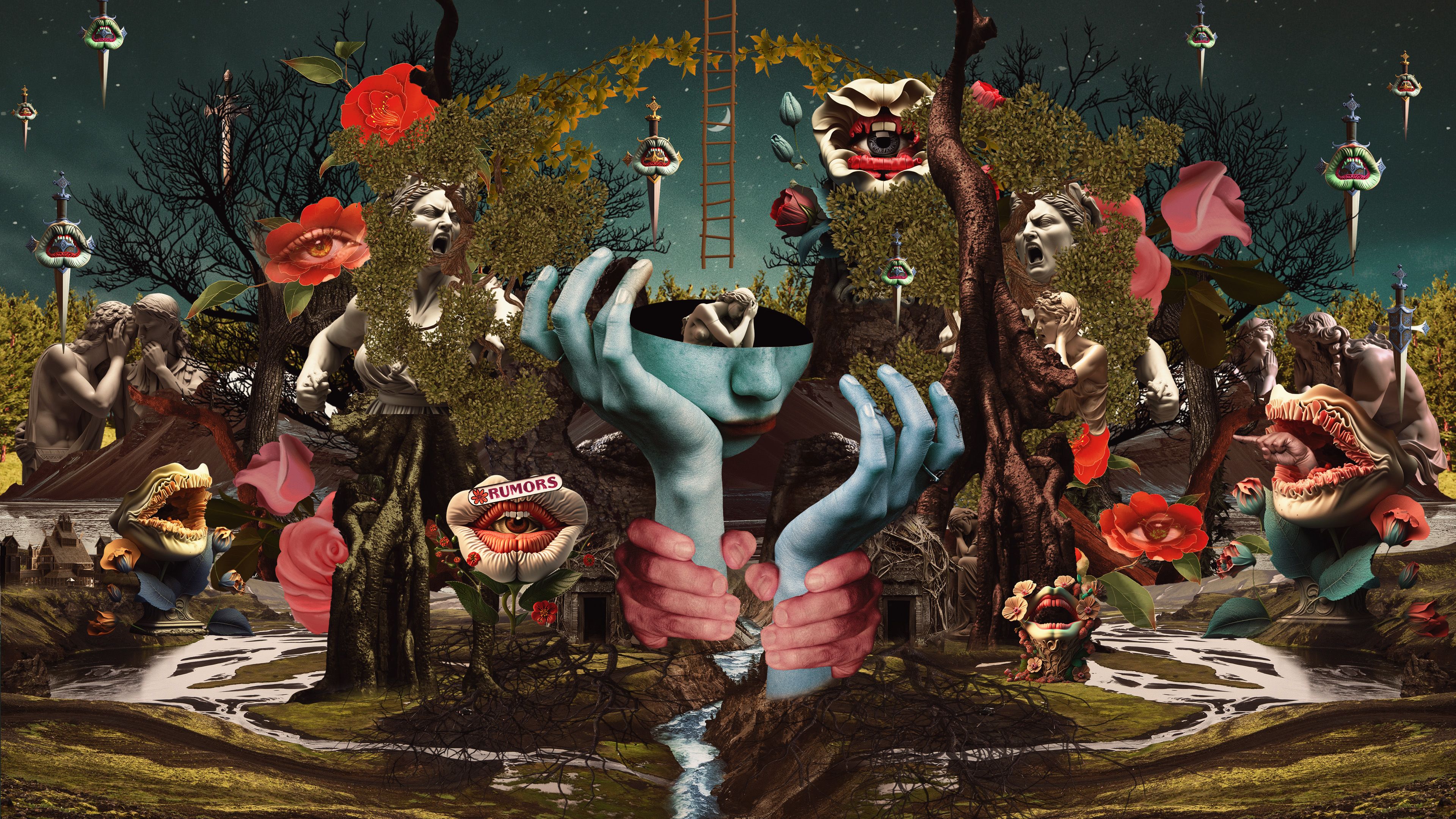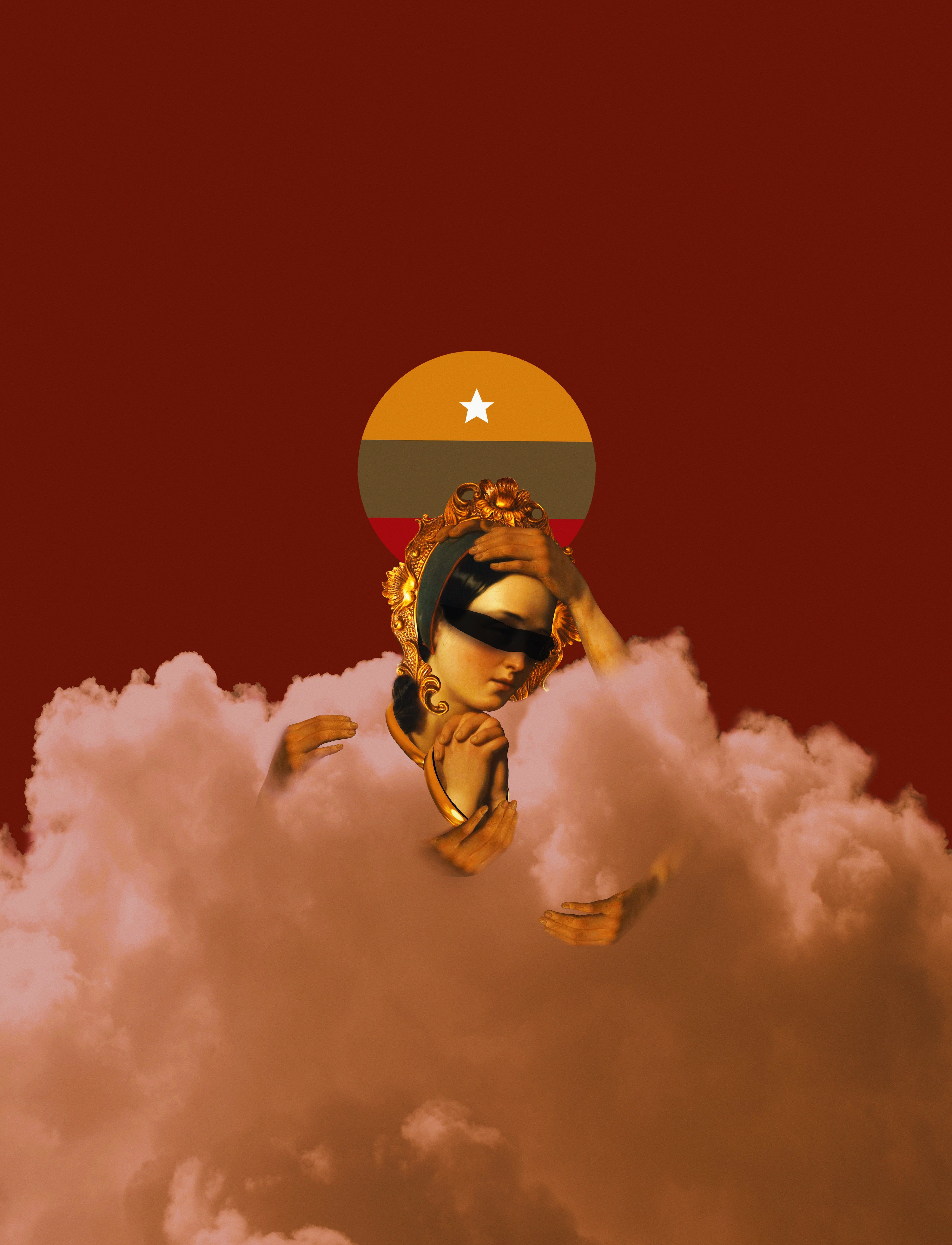
Regina Kim is a young South Korean visual artist whose multi-disciplinary practice spans collage, illustration, and moving image. Her vibrant work aims to transcend visual boundaries, creating an intense and surreal visual smorgasbord that blends countless references in order to challenge societal and cultural divisions. By embracing a sense of boundless imagination, she hopes to convey new human ideals through art, and present imagined worlds that reflect the complexity of the human experience, while also providing sanctuary for reverie. Her current show at Shanghai Powerlong Museum, a collaboration with acclaimed software engineer Tony Lim, brings her collages to life in vibrant 360-degree animations that absorb the viewer's attention deep into her netherworld, alongside works by other exhibiting artists. In this interview for House Collective Journal she shares her journey so far, discusses her current Masters at The Royal College of Art, and tells us why art is an infinite language.
Why are you drawn to work in the medium of collage, and what do you
love about the surreal?
I have been working as a visual artist for four years, primarily focusing on collage, illustration, and media art, with collage being the starting point of my practice. I balance both art projects and commissioned work, and, since my work is digital based, it’s easier for me to collaborate with various brands, musicians, and also to host my own exhibitions. The main theme I’m currently working with is ‘Beyond Borders’. During my time studying Fine Art at Kingston University, I became fascinated by the concept of diversity and started to notice the many walls and boundaries that exist around us. I found collage to be an ideal medium to express these boundaries and limitations, so I began to develop my practice around it. As I explored collage, I researched the works of many artists and realised how closely related collage is to surrealism. Artists like Salvador Dalí, René Magritte, Pablo Picasso, David Hockney, and Hannah Höch have greatly influenced my perspective, giving me the freedom to see beyond the ordinary. I am captivated by the world beyond reality and aim to create surreal spaces and worlds. I don’t seek to escape reality entirely, though – I draw upon real-life emotions and issuesto create imagined worlds that reflect the complexity of the human experience.

Do you think it is important to champion diversity in art?
In today’s world, the theme of diversity is incredibly important. Everything around us – race, culture, art, science – is interconnected and shows a rich blend of diversity. Art is a powerful medium that can capture a range of voices and deliver strong messages. I believe that art is an infinite language, one that allows all of us to see and feel beyond words. It is essential for art to reflect diversity, as it gives us a chance to represent the time we live in. I also believe it is part of an artist’s role to convey social and political messages through their work.

Would you say that you always knew you would be an artist?
I studied Law and Clothing and Textiles in Korea, so I never imagined I would become an artist. Initially, I came to London to study English, and while doing so, I was looking for schools to study fashion. However, I found that fashion design had too many restrictions when it came to expressing full creativity. Working in a fashion company would require me to consider the company’s style and profitability, which didn’t align with the kind of creative work I wanted to pursue. It was during a visit to Tate Modern that I had what felt like a ‘eureka’ moment. Seeing artists who used such a wide range of materials to tell their own stories made me realise that I don’t have to be a skilled painter to become an artist. It was also the first time I truly understood contemporary art. After returning to Korea, I spent about four months preparing my portfolio and applied for the Fine Art Pre-Master’s course at Kingston University. I chose the Pre-Master’s course because I wanted to see if I genuinely had the talent to pursue art. My time at Kingston was an excellent starting point and gave me the confidence to embark on more creative projects. Now, I am continuing my journey, searching for new ‘eureka’ moments while studying for my master’s at the Royal College of Art.

Talk us through your creative process when making a new work … Where does your process take you internally?
I place great importance on the research process for all of my works. Having studied art in the UK, I learned that research is a crucial part of the creative process. Therefore, before I start creating, I engage in brainstorming, mind mapping, artist and artwork research, moodboards, colour tone research, and composition research. Rather than just creating something that looks beautiful or aesthetically pleasing, I prefer to give each image and composition a grounded, meaningful basis. My images always carry more than one meaning, encouraging the audience to interpret them in multiple ways.
Dreamscapes exhibits at Shanghai Powerlong Museum until June 2025. Find out more about the artist here:
Images (top to bottom): The InfinIte World, 2023, Cruella, 2024, The Forest of Dreams, 2022; Together, 2024. All images courtesy of the artist.